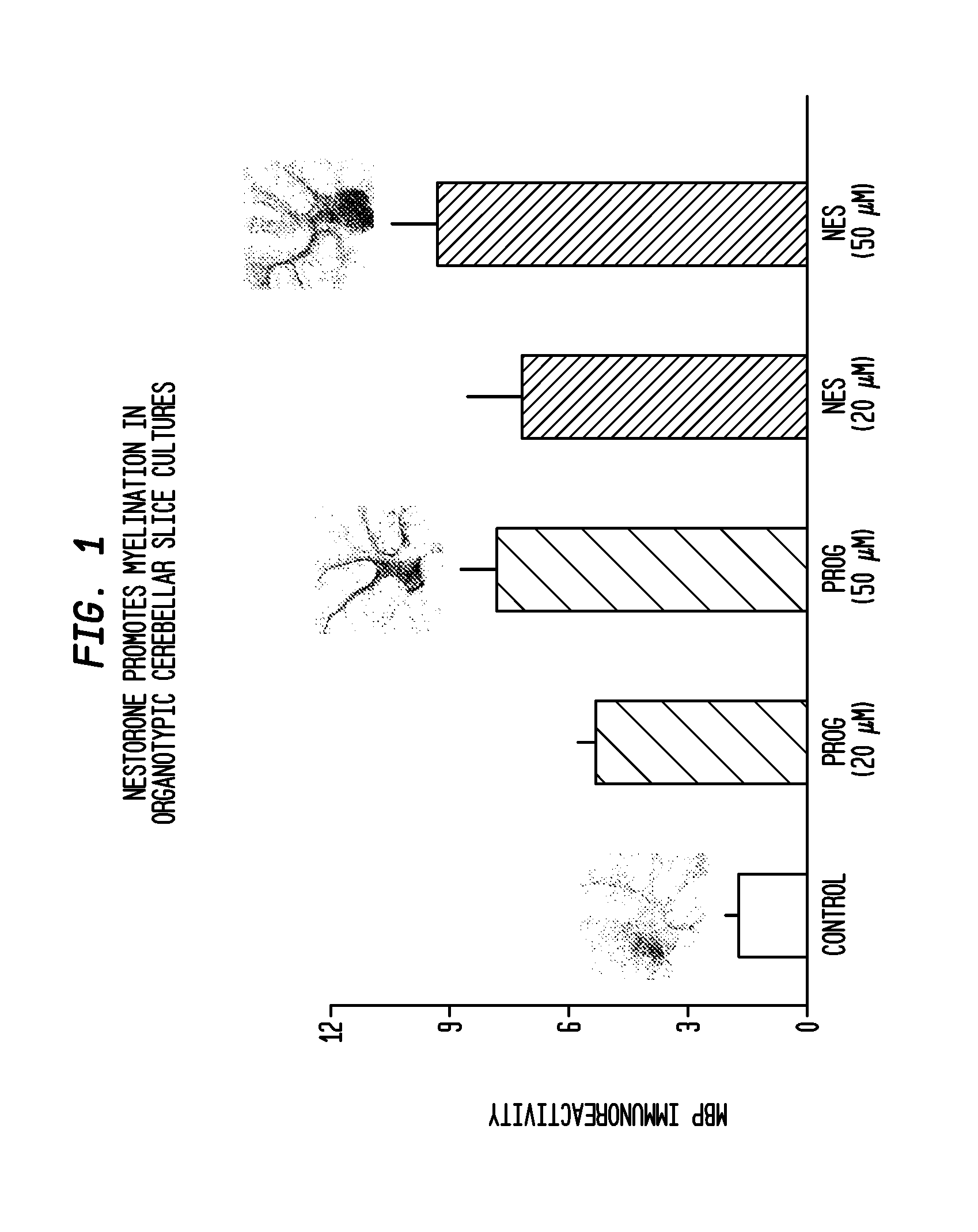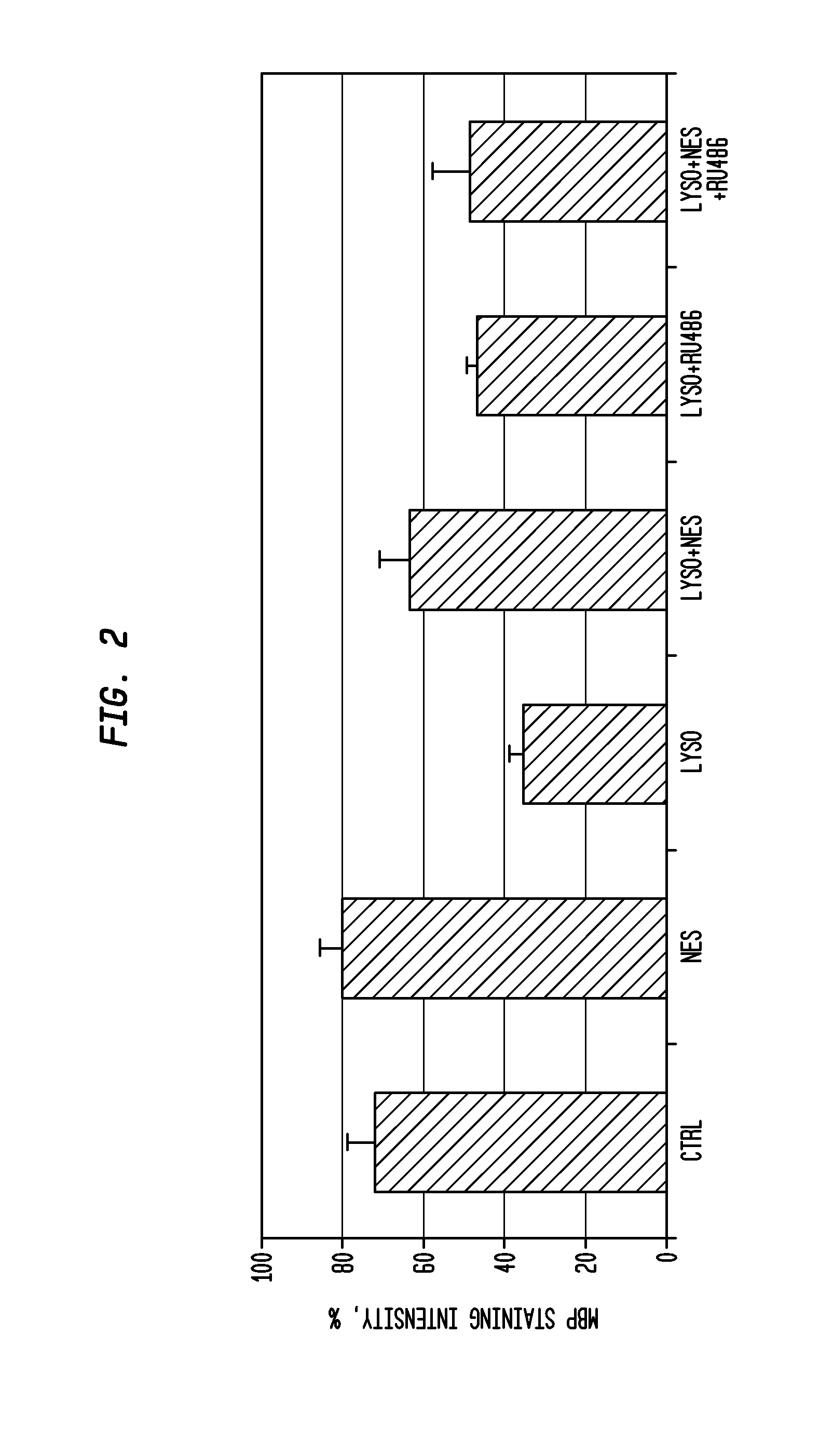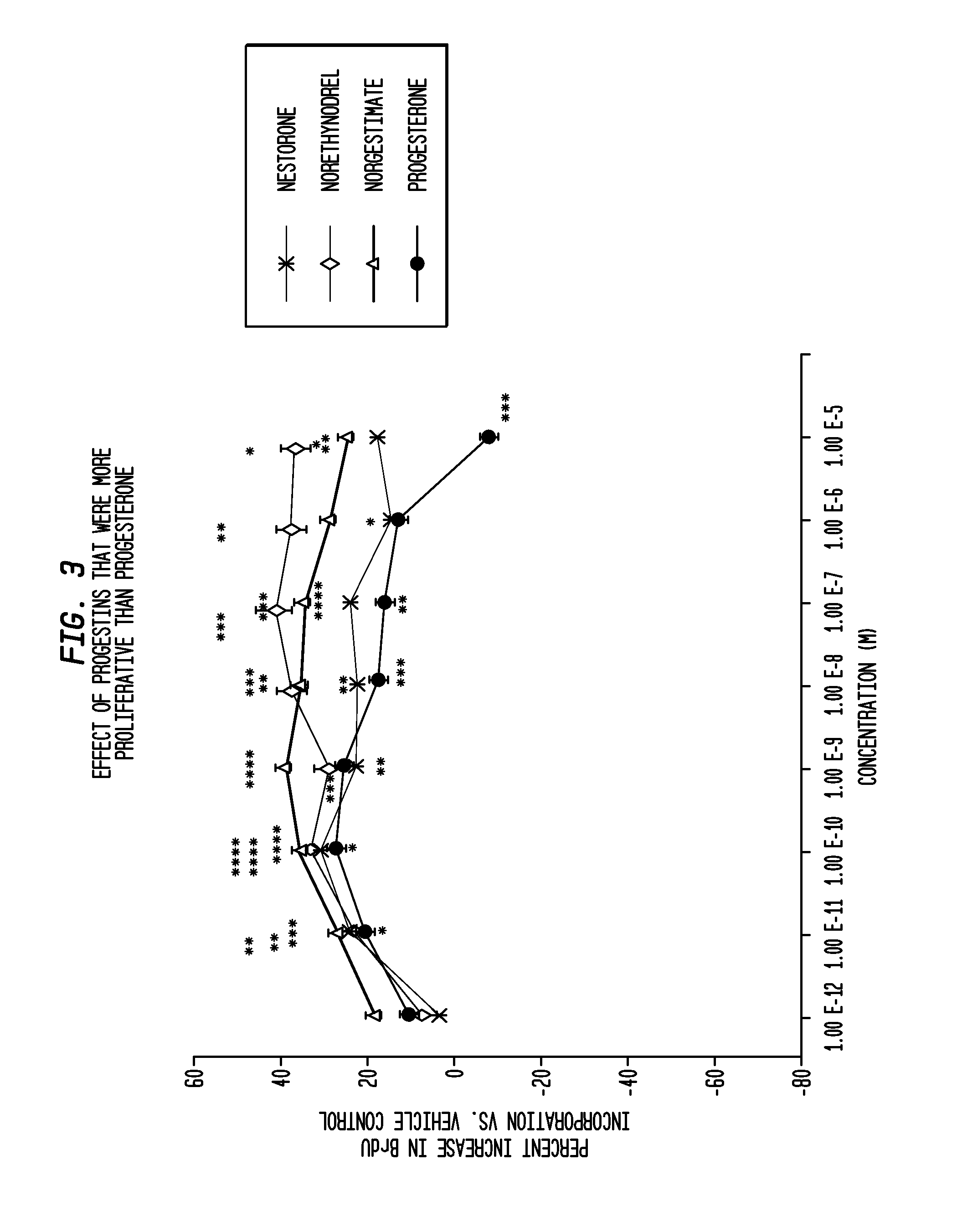Neuroprotection and myelin repair using nestorone®
a technology of myelin repair and nestorone, which is applied in the direction of biocide, drug composition, nervous disorder, etc., can solve problems such as neurodegeneration, and achieve the effect of preventing or reducing neurodegeneration
- Summary
- Abstract
- Description
- Claims
- Application Information
AI Technical Summary
Benefits of technology
Problems solved by technology
Method used
Image
Examples
example 1
[0067]In vitro studies were carried out to determine neural progenitor cell (NPC) regeneration in rats. 5-Bromo-2-deoxiuridine (BrdU) chemiluminescence enzyme-linked immunosorbant assay (ELISA) and the results are shown in FIGS. 6A-D herein. Cell proliferation was determined by S phase incorporation of BrdU. After 4 to 6 hours starvation (medium without supplements), rNPCs were loaded with 10 μM BrdU in the presence or absence of bFGF and varying concentrations of P4 or test progestins in unsupplemented maintenance medium for 1d. The rNPCs were then processed as described previously (1, 14). After subtracting the value of the blank (without BrdU loading), data were analyzed using a one-way ANOVA, followed by a Neuman-Keuls post hoc test. These results demonstrate that at 24 hours norgestimate was more potent in cell proliferation than progesterone at all concentrations. Nestorone® and progesterone were comparably efficacious at their EC100 concentrations. Norethynodrel produced comp...
example 2
[0068]Comparisons of neuroprotection against neurodegenerative insults were carried out. Efficacy was determined in connection with the protection of primary hippocampal neurons against degeneration induced by excitoxic glutamate. Hippocampal neuronal cultures grown on 90-well culture plates for 7d in vitro were pretreated with vehicle alone or test compounds, followed by exposure to 200 μM glutamate as previously described (13). After glutamate exposure, cultures were washed with HEPES-buffered saline solution and replaced with fresh NBM containing the test compounds or combinations. Cultures were returned to the incubator and incubated for 24 hours prior to analysis of neuronal viability using colorimetric LDH release in the media. Dose-response analysis was conducted for each of the progestins tested, and the results are shown in FIGS. 7A-F. Neuroprotective efficiency was calculated as follows: NE=(Vsample−Vglutamate) / (Vsubcontrol−Vglutamate). As can be seen, Nestorone® induced c...
example 3
[0069]The generalized ability of the above in vitro findings to the in vivo condition were investigated. Analyses of NPC proliferation in rats and cell viability were conducted in three-month-old Sprague-Dawley ovariectomized female rats with various of the progestins. Cell cycle protein expression was determined by Western blot analysis, and the results as shown in FIG. 8A indicated that Nestorone® appeared to be slightly superior to progesterone in terms of increased PCNA expression at the protein level. Levonorgestrel and MPA, on the other hand, had no significant effect on PCNA expression, while CDC2 protein expression was significantly increased by both progesterone and Nestorone®, but not with levonorgestrel and MPA. In order to assess the total number of BrdU+ cells, the contralateral hippocampal hemisphere used for protein analysis was fixed and processed by FACS analysis. The total number of BrdU+ cells per each hippocampus was determined and normalized to that of vehicle c...
PUM
 Login to View More
Login to View More Abstract
Description
Claims
Application Information
 Login to View More
Login to View More - R&D
- Intellectual Property
- Life Sciences
- Materials
- Tech Scout
- Unparalleled Data Quality
- Higher Quality Content
- 60% Fewer Hallucinations
Browse by: Latest US Patents, China's latest patents, Technical Efficacy Thesaurus, Application Domain, Technology Topic, Popular Technical Reports.
© 2025 PatSnap. All rights reserved.Legal|Privacy policy|Modern Slavery Act Transparency Statement|Sitemap|About US| Contact US: help@patsnap.com



